Stubborn plaques that sting, crack, and steal your sleep? You want relief that actually calms the skin, not just covers it up. That’s where light therapy—a mainstay treatment used by dermatologists—earns its keep. It won’t cure psoriasis, but it can shrink plaques, ease itch, and stretch out flare-free time without adding more pills to your life. Here’s what to expect, how to do it safely, and how to make the time and cost work for you.
TL;DR / Key takeaways
- Phototherapy (especially narrowband UVB) is one of the most effective non-drug treatments for plaque psoriasis, often clearing skin in 6–10 weeks.
- Best match by coverage: widespread plaques → NB-UVB booth; stubborn spots (elbows/knees/scalp) → excimer laser/targeted UVB; thick palms/soles → PUVA in select cases.
- Common side effects are mild sunburn-like redness and tanning; serious risks are rare when supervised. PUVA carries higher long-term skin cancer risk.
- Clinic treatments are structured and usually insurance-backed; home units are convenient and cost-effective after a few months but need careful coaching.
- Plan for 2–3 sessions per week, dose increases stepwise, and maintenance sessions to reduce rebounds. Combine with moisturizers and select topicals for faster wins.
How light therapy works for plaque psoriasis
Psoriasis speeds up the skin’s growth cycle and stirs up inflammation, which stacks up into thick, itchy plaques. Phototherapy uses specific wavelengths of ultraviolet (UV) light to slow that overgrowth and calm the immune traffic in the skin. The goal is to strike the sweet spot: enough light to thin plaques and quiet inflammation, not so much that you burn.
The workhorse is narrowband UVB (NB‑UVB, 311–313 nm). It’s precise, potent, and safer than older broadband UVB. Targeted UVB (excimer laser or lamp at 308 nm) blasts small, stubborn plaques while sparing clear skin. PUVA (psoralen + UVA) goes deeper, useful for very thick or palm/sole disease, but it requires eye protection for 24 hours and has more long-term risks.
What does the evidence say? Dermatology groups consider phototherapy a first‑line option for moderate to severe plaque psoriasis. Large reviews report high clearance rates with NB‑UVB, often within 6–10 weeks when done 2–3 times weekly. Targeted UVB works fast for small areas in fewer visits. PUVA can be powerful for thick plaques but is used less now because NB‑UVB is simpler and safer for most people. Credible summaries come from the American Academy of Dermatology (AAD), the National Psoriasis Foundation (NPF), British Photodermatology Group guidance, a 2019 Cochrane review on phototherapy, and multiple randomized trials comparing NB‑UVB, excimer, and PUVA.
| Type | Wavelength | Best for | Typical regimen | Effectiveness | Common side effects | Long‑term risks |
|---|---|---|---|---|---|---|
| NB‑UVB booth | 311–313 nm | Widespread plaques | 2–3 sessions/week; 6–10 weeks to clear; then taper | ~60–75% reach PASI‑75 in 8–12 weeks (multiple trials; AAD/NPF guidance) | Transient redness, tanning, dryness | Low when monitored; much lower than PUVA |
| Targeted UVB (Excimer laser/lamp) | 308 nm | Localized stubborn plaques, scalp edges, elbows/knees | 1–2 sessions/week; 6–10 sessions often enough | Rapid plaque thinning; high clearance on limited areas (systematic reviews) | Blistering if overdosed, temporary hyperpigmentation | Low; small skin area treated |
| PUVA (psoralen + UVA) | 320–400 nm + photosensitizer | Thick plaques, palms/soles | 2–3 sessions/week; 8–12 weeks; strict eye/genital protection | High response rates in trials; often used when NB‑UVB underperforms | Nausea (oral psoralen), photosensitivity, redness | Increased SCC risk with high cumulative doses; cataract risk without eye protection |
| Home NB‑UVB panels/wands | 311–313 nm | Mild–moderate disease, maintenance, access barriers | 2–3 sessions/week per protocol; remote dose guidance | Clinic‑level outcomes with proper supervision (JAMA Dermatology and multicenter data) | Same as NB‑UVB; risk of dosing errors without training | Low with proper logs and periodic MD review |
How fast will you see changes? Early signs often show by week 2–3: less itch, softer edges, less scale. Meaningful clearing usually lands by weeks 6–10 with NB‑UVB. Targeted UVB can melt small plaques faster. After clearing, many people switch to maintenance once a week or every other week to keep plaques quiet longer.
Are you a good candidate? Safety, risks, and what to expect
If your plaques cover more than 5–10% of your body, show up on tough sites (scalp, elbows, knees), or resist topicals, phototherapy is a strong option. It also pairs well with many treatments you might already use, like vitamin D creams or certain biologics, to speed clearing. AAD and NPF both list phototherapy among first‑line options for moderate disease and as an add‑on for severe disease.
Good fit indicators:
- You want a non‑pill, non‑injection path or a way to boost your current regimen.
- You can commit to 2–3 quick visits weekly for a couple of months, or you’re open to a supervised home device.
- Your plaques are widespread enough to make targeted injections alone feel slow or incomplete.
Situations that need a careful plan (or a different route):
- History of melanoma or many nonmelanoma skin cancers: discuss risks and alternatives.
- Photosensitive disorders (e.g., lupus), or medications that cause photosensitivity (certain antibiotics, diuretics, antifungals, retinoids): you may need dose changes or a different therapy.
- Severe eye issues or prior cataracts if considering PUVA: you must stick to strict eye protection.
- Very fair or very dark skin: dosing and pigment changes need careful attention. People with skin of color may notice temporary darkening around treated plaques; it fades but can linger.
Common side effects:
- Sunburn‑like redness or warmth for a day or two.
- Tanning or temporary darkening around treated plaques.
- Dryness and mild itch; moisturizers solve most of this.
Less common but important:
- Blistering if the dose jumps too fast (more likely with excimer on small spots). This heals but slows your schedule.
- PUVA‑specific: nausea (if oral psoralen), light sensitivity for 24 hours, and higher long‑term risk of certain skin cancers with high lifetime dosing. That’s why NB‑UVB is preferred when it works.
What does a safe session look like?
- Protect your eyes with UV‑rated goggles every time.
- Shield genitals with a snug, opaque cover. For PUVA, cover the face if it’s clear.
- Don’t apply fragrance, retinoids, or coal tar right before a session unless your derm says so. Use plain petrolatum on thick plaques to help light penetrate scale.
- Start low, go slow: dose increases are gradual, often 10–20% each visit if there’s no redness.
Who says so? The safety steps above align with AAD/NPF guidance, British Photodermatology Group protocols, and clinic handbooks used in major centers. This is the routine used in trials and real‑world clinics.
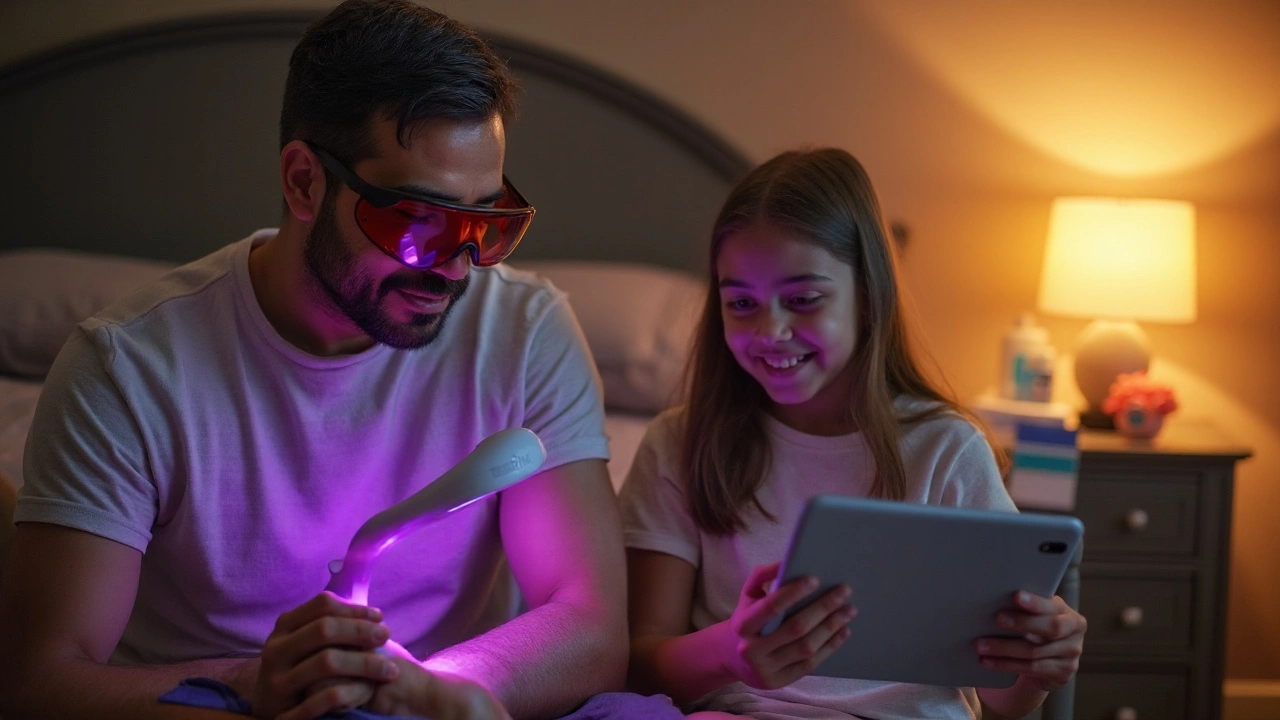
Getting treatment: clinic vs home, costs, and a step‑by‑step plan
Both clinic and home routes can work. The best choice depends on your schedule, coverage, and comfort with self‑treatment.
Clinic phototherapy:
- Pros: precise dosing, nurse oversight, fewer errors, insurance often covers after prior authorization.
- Cons: travel time, fixed hours, copays add up, missed visits slow progress.
Home phototherapy:
- Pros: no commute, easier to stick with 2–3 weekly sessions, great for maintenance and small flares.
- Cons: upfront cost, you need training and a written dosing plan, you must keep logs and send updates.
Costs and practical numbers (2025, ranges vary by country and plan):
- Clinic copays: roughly $15–$50 per session with insurance; $30–$100 cash per session without. Many people need 20–30 sessions to clear.
- Home NB‑UVB devices: hand wands ~$300–$800; partial body panels ~$800–$1,800; full panels/booths $1,800–$3,500+. Some insurers rent or cover with documentation.
- Excimer sessions often bill higher per treatment but target small areas and need fewer visits.
Decision rules that keep choices simple:
- Coverage under about 10% body surface and a few stubborn plaques: targeted UVB (excimer) or a home wand/panel can be efficient.
- Coverage over 10% body surface: NB‑UVB booth (clinic or home panel) is time‑efficient.
- Thick palms/soles or very scaly plaques not budging: consider PUVA or excimer, often with keratolytics (urea/salicylic acid) to thin scale.
- Already on a biologic but want faster clearing: add NB‑UVB for 4–8 weeks, then taper. This combo has solid clinical support.
Step‑by‑step plan to start phototherapy:
- Baseline check. Measure your body surface area (use the “palm = 1%” rule), list current meds, and note any photosensitivity history.
- See your dermatologist. Confirm the plan (NB‑UVB, targeted UVB, or PUVA). Ask for a written protocol, including starting dose, percent increases, and what to do after missed visits.
- Do a minimal erythema dose (MED) test if advised. This helps personalize your starting dose by skin type and sensitivity.
- Prep your skin. Apply plain petrolatum to plaques 30–60 minutes before treatment to reduce surface reflection and help light reach deeper scale. Skip perfumes or retinoids that day unless your derm okays it.
- Gear up. Wear UV goggles. Shield genitals. For PUVA, wear wraparound UVA‑blocking sunglasses for 24 hours after psoralen.
- Treat 2–3 times per week. Space NB‑UVB at least 24 hours apart (most clinics do Mon/Wed/Fri). Targeted UVB often runs 1–2 times weekly.
- Increase doses slowly. If no redness, your dose rises by about 10–20% each session until plaques thin. If you get tender redness lasting over 24 hours, pause or step back the dose.
- Track your skin. Take the same three photos weekly under the same light. Note itch scores (0–10) and sleep quality. These prove progress when you feel stuck.
- Combine smartly. Moisturizers always. Add vitamin D analogs or low‑to‑mid potency steroids to rough spots if your clinician agrees. Avoid coal tar right before UV unless your protocol includes it.
- Shift to maintenance. After clearing, taper to once weekly or every other week for 1–3 months. Many people extend remission this way.
Two quick real‑world examples:
- Widespread plaques (about 12% body surface): NB‑UVB booth 3x/week. Week 3: itch drops by half. Week 8: plaques mostly flat and pale. Week 10: switch to weekly maintenance for 6–8 weeks.
- Few stubborn plaques on elbows and knees: excimer laser 1–2x/week. By visit 6–8, edges blur, scale thins. Stop once clear. Restart a short burst if plaques return.
Quick checklist to bring to your appointment:
- Photos of plaques and a simple map of where they are.
- List of meds and supplements, including recent antibiotics or isotretinoin.
- History of skin cancer in you or close family.
- Your weekly schedule so you can lock in consistent session times.
Pro tips that save you headaches:
- Consistency beats intensity. Missing a week often means you drop the dose and need extra visits to catch up.
- Mark edges of plaques with a cosmetic pencil before targeted treatments so you don’t miss spots.
- For scalp plaques, part the hair and use a comb attachment or targeted device; foam topicals after UV help.
- Hydrate your skin daily; well‑moisturized plaques respond faster to UV.
FAQs and troubleshooting: flares, plateaus, burns, and real‑life tips
What if I don’t see results by week 3? Early response can be subtle—less itch, fewer flakes. If plaques still look the same by week 4–5, ask your clinic to review your MED, dose steps, and whether scale needs more thinning with urea or salicylic acid.
What if I get a burn? Skip the next session for that area, moisturize, and let redness fade. When you return, repeat the last tolerated dose or drop 10–20%. If blistering happens (rare), hold treatment until healed and ask for a dose recalibration.
Is red light therapy the same thing? Not for psoriasis. Low‑level red light devices are popular online, but evidence is weak for plaque psoriasis. The best‑supported options remain NB‑UVB, targeted UVB, and PUVA when needed.
Can I use phototherapy with biologics? Often yes, and it’s common in practice to speed clearance at the start of a biologic. Your clinician will set a plan and watch for excess dryness or redness.
Will I tan or get darker patches? Likely some tanning around treated skin. In skin of color, darkening (post‑inflammatory hyperpigmentation) can linger after plaques flatten but typically fades over months. Gentle sunscreen use on clear skin can help even things out between sessions.
How long does remission last? It varies. Many people enjoy months of calmer skin after a full NB‑UVB course, especially if they keep a light maintenance schedule and stay on moisturizers or light topicals.
Is phototherapy safe long term? With NB‑UVB, the safety profile is favorable when doses are monitored and burns are avoided. PUVA has more long‑term risk, especially after many sessions and high cumulative doses, which is why it’s reserved for select cases now. This balance is reflected in AAD/NPF and British Photodermatology Group guidance and long‑term cohort data.
Can I do this at home without a doctor? Home devices work best with a prescriber’s protocol and periodic check‑ins. You want a clear dosing chart, a plan for missed sessions, and instructions for side effects. Many insurers require this anyway to cover the device.
Troubleshooting by scenario:
- Plateau after early wins: add a vitamin D cream in the evening, or a short burst of mid‑potency steroid on thick spots; check if dose increments are too conservative.
- Frequent redness: your increments may be too steep; trim to 10% increases or repeat the last dose more often.
- Busy schedule: move to a home panel with remote supervision; batch short sessions before work or at night.
- Few plaques won’t budge: ask about targeted UVB (excimer) to push those last spots over the edge.
- Thick scale: pretreat with urea 20% or salicylic acid for a week to thin the armor, then resume UV.
Simple decision path you can use right now:
- Under 10% body covered? Choose excimer or a home wand/panel for targeted areas.
- Over 10% body covered? Choose an NB‑UVB booth (clinic or home panel).
- Palms/soles thick and painful? Ask about PUVA or targeted UVB plus keratolytics.
- On a biologic and want faster results? Add NB‑UVB for 4–8 weeks, then taper.
Last word on expectations: phototherapy is a routine, not a miracle. The routine works—especially when you show up, step doses carefully, protect sensitive areas, and moisturize daily. Stick with the plan for 6–10 weeks, then enjoy the calm and keep it with light maintenance. That’s how you turn controlled UV into real‑world relief.
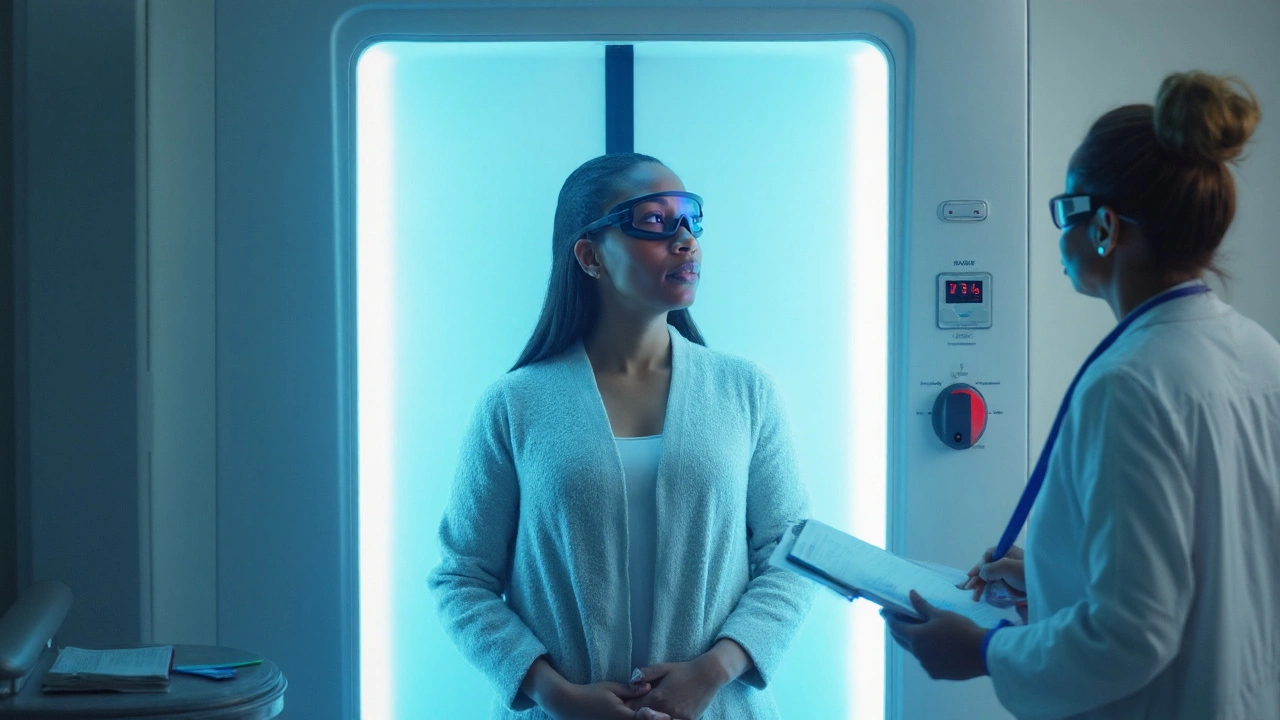

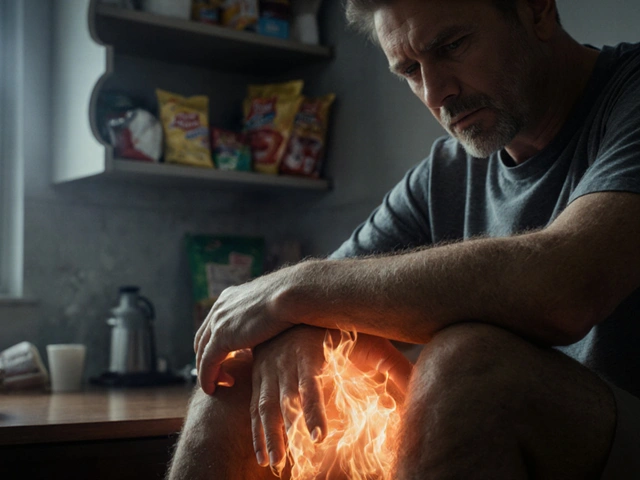
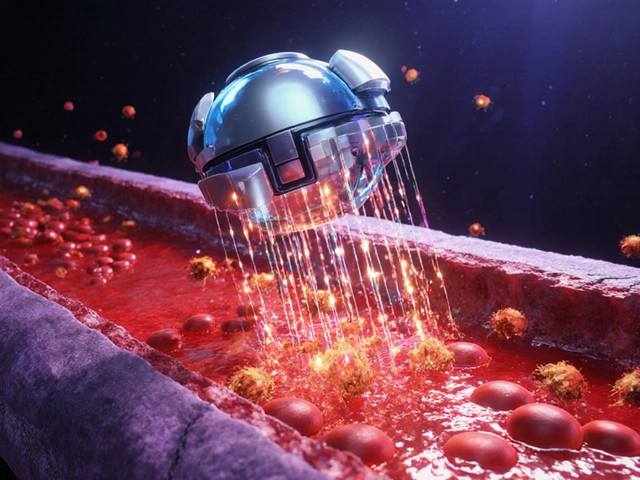
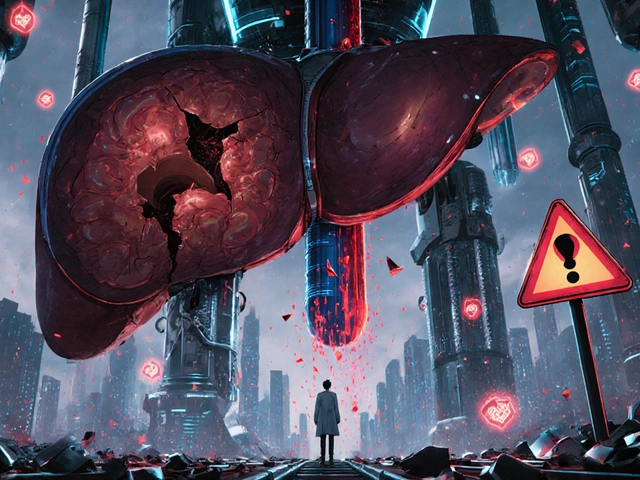
Gaurav Joshi
August 22, 2025 AT 11:30Clinic NB‑UVB helped flatten my elbow plaques enough that I actually slept through the night again, and that alone made the whole routine worth it.
Stick to the schedule if you can, because consistency really does beat blasting sessions when you miss a week. Bring a simple map of affected spots and a list of meds to the first visit so the nurse can set realistic starting doses. Use a plain moisturizer every evening and apply petrolatum to very scaly patches before sessions if your derm says it's okay, it helps the light penetrate. Track itch and photos every week with the same three photos under the same light, that record saved me a re-calibration later. For palms and soles, be prepared that PUVA might come up as an option; it worked for one stubborn patch on my hand while NB‑UVB did most of the rest.
Christopher Munt
August 25, 2025 AT 08:56Same experience here, three times a week was the sweet spot for me and itch dropped fast 😊
Home panels were tempting but the clinic oversight for the first 8 weeks helped me avoid a dosing mistake. After clearing I switched to once weekly maintenance and it stretched remission out a lot. Staying hydrated and slathering on a cheap emollient every night kept the skin supple between sessions.
Edward Glasscote
August 28, 2025 AT 06:23Went with a rented home panel for 3 months and it matched clinic results once I followed the protocol.
Keep a dosing log and email your derm photos every 2–4 weeks, that remote check kept my insurer happy and my skin safe. Don’t rush dose increases even if you feel impatient.
Gaurav Joshi
August 31, 2025 AT 03:50Home devices are overrated and usually sold with shiny promises that don’t pan out, so save your money unless you actually read the protocol and commit.
Jennifer Castaneda
September 3, 2025 AT 01:16They hide the long term cancer risk and push cheap booths like it’s no big deal.
Annie Eun
September 5, 2025 AT 22:43Started with targeted excimer for a few small knee plaques and the edges softened faster than I expected, which felt dramatic and oddly emotional.
Follow the oil/petrolatum tip for thick scale and you’ll notice the light actually hits the skin instead of bouncing off. Do the MED if offered so your starting dose isn’t a guess, that test calmed me. Keep simple sleep and itch notes because improvement often shows in how you sleep before it shows on a photo. Be dramatic about moisturizers they truly change response times. If you’re on other meds, list them clearly and get the doc to confirm there’s no photo interaction, then follow the written protocol religiously.
Jay Kay
September 8, 2025 AT 20:10Good tips, focus on routine not shortcuts
Franco WR
September 11, 2025 AT 17:36I went through a full NB‑UVB course and kept a ridiculous spreadsheet of doses, photos, itch scores, and sleep quality, and the data made all the decisions for me so I could stop guessing.
Start low and increase slowly, that’s the single most practical rule. If you burn, stop and back off; burns prolong the whole process and waste visits. For busy people, block out consistent times in the calendar and treat phototherapy like a recurring appointment you don’t cancel lightly. When plaques thin, switch to maintenance rather than declaring victory and stopping cold, because maintenance prevents the rebound more than you’d expect. Combining light with a vitamin D analog in the evening sped things up for me, but only after my dermatologist OK’d it and I respected gap times for topicals. Excimer is brilliant for edges and stubborn spots, use marking pencil so technicians don’t miss the borders. For palms and soles, accept that keratolytics for a week or two before the light are part of the job, they shave the armor down and make the UV do the rest. Always wear proper goggles and shield genitals every session, that’s not drama but basic safety. PUVA is effective for thick disease but treat it like a second-line tool with real respect for cumulative dosing. If you go home-route, keep the log, send photos to your prescriber, and review it at least monthly. Don’t chase faster results with bigger jumps, you’ll just add downtime from burns. Expect subtle wins in week 2–3 and big changes around weeks 6–10, patience is the treatment. Finally, moisturize daily, hydrate, and be consistent with appointments, that routine delivers results more reliably than miracle gadgets or random dosing tweaks.